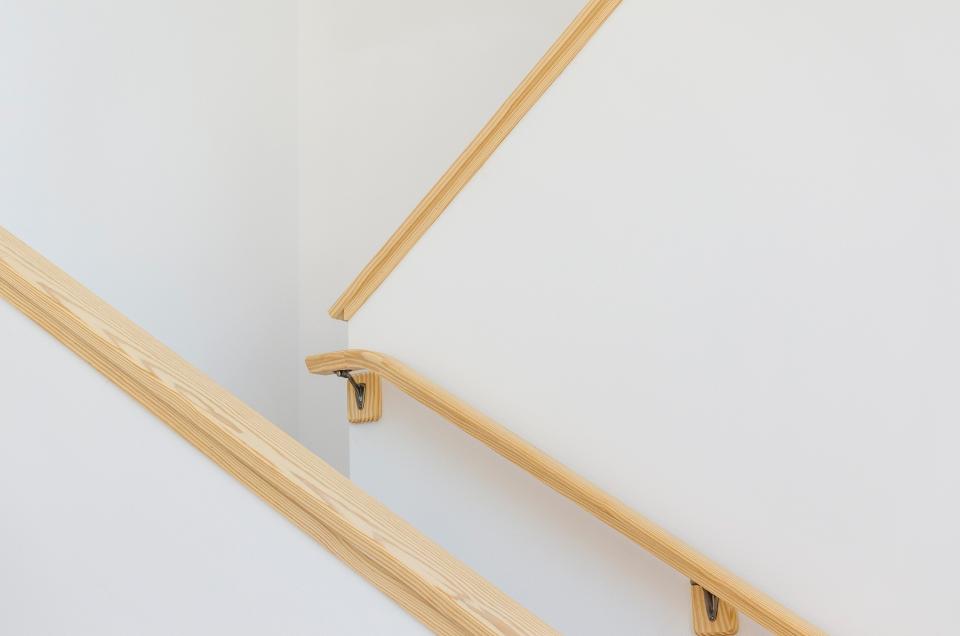Installing Handrails are generally used to help prevent falls in the stairway, but they can also be used to add a decorative look. If you are looking to install handrails in your home or business, it is important to understand where they should start and stop so that they don’t interfere with the flow of traffic.
Handrails are a great way to make stairs more accessible for people with disabilities. They can also be used to help guide children and people who are visually impaired or blind.
Table of Contents
But Where Should a Handrail Start and Stop?

The 1990 Americans with Disabilities Act (ADA) requires handrails at the nosing of the last step and the first step. Handrails must match the nosing line length per the ADA.
Handrails should end at a step and not continue downhill. Someone using a railing that continues down the hill may be at risk. Trips on improperly installed handrails can also cause accidents.
The first step in installing handrails is deciding where people will walk. Measure with a tape or ruler. After determining where people will walk, indicate the handrail’s start and end. Contact a railing contractor with questions concerning this process.
Handrails should start and stop at the same level as other stair features to prevent accidents. A landing opposite the top of the stairs should start and stop at the same height as the handrail.
Handrail Start and Stop
Handrails shouldn’t be higher than the top step or landing. In most cases, handrails are designed to provide support for those who are walking up or down stairs. This means that they should be at least as high as your waist when you’re standing on them.
Handrails should also be installed in compliance with the guidelines of the Occupational Safety and Health Administration. The federal agency has set minimum workplace safety and health requirements that apply across industries and workplaces.
There are several things that you should look out for when installing handrails in your home or business. This guide will help you understand the different types of handrail styles and how to install them correctly.
Handrails should be installed by an expert. If you are unsure which type of railing is best for your home or business, consult with an expert in the industry before making any decisions.
Where Should a Handrail Start?
Your handrail should start at the nosing of the top step.
The nosing is the protrusion of the staircase that has a flat edge and is about 1 inch wider than the rest of the treads (the raised edge of each step). It’s where you’ll attach your handrail.
Where Should a Handrail Stop?
Your handrail should also be placed on the lowest step in the staircase, as this is where you will stand when using it.
The reason for this is that it will be less intrusive than other designs and will blend better with other architectural elements in your building.
How Far Should Your Handrail be From The Edge of a Stair?
The standard is to have a 48″ minimum between the bottom of the handrail and the edge of a step. The current code calls for no less than 36″. This is to allow for any modifications that might need to be made in the future, such as the installation of additional rails or extensions or changes in stairs that may be caused by alterations such as widening or narrowing.
What is The Best Way to Install a Handrail?
There are two basic methods for installing a handrail, depending on how you want it to look and function. One is a more permanent installation that requires the removal of existing wall coverings, trim, and ceiling tiles. The other is a temporary installation that can be removed after the job is complete.
How Long Does It Take to Install a Handrail?
Installing Handrails depends on how long it is going up on your wall and how much work you want to put into it. If you are installing just part of a simple extension, then installation should only take around an hour or so. If you are installing something like three different levels, then expect that each level may take two hours or more than one hour each depending on if there is any prep work needed for each level.
How Do You Know What Type of Railing is Right for Your Home?

When selecting a railing for your home, it’s important to consider not just the look but also its safety features, such as where to start and stop the rail, which side of the staircase will have the railing and whether or not you wish to have an overhang that extends beyond the staircase landing. You also need to consider whether you want a metal or wood railing installed in your home’s stairs, as well as what type of hardware you would like on your railing system if this is something you plan on purchasing separately (such as bolts or screws).
Conclusion
A railing should start at the top of a staircase with an open landing at the bottom. A hallway or lobby doorway is a good place to build a handrail. Even without a landing, a railing can be erected on either side of the aperture, but the rail ends must be 36 inches above the floor.
Handrails must always be installed and maintained. If not, they can create accidents and risk.


